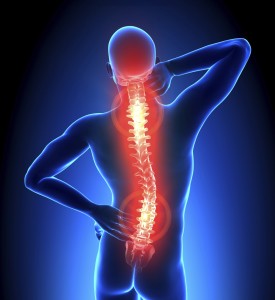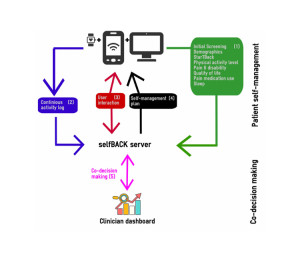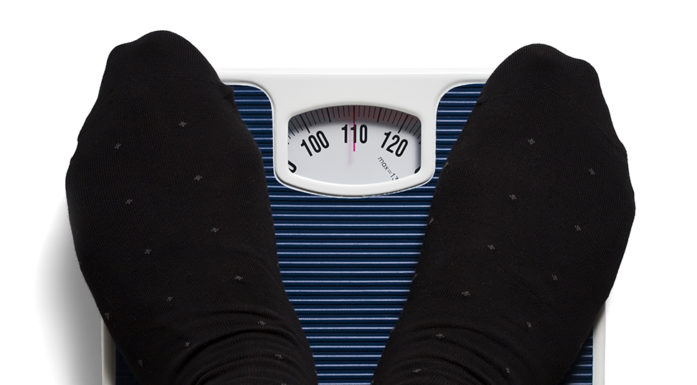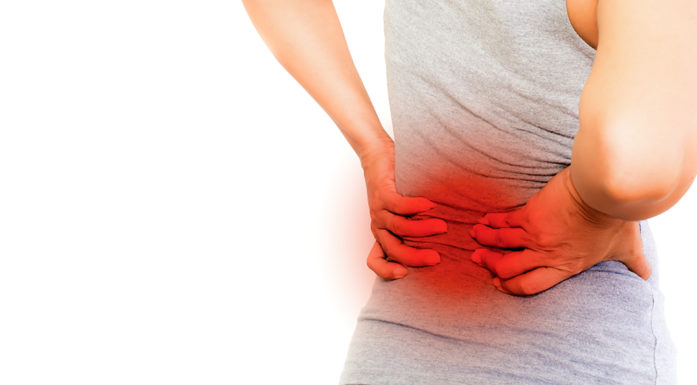A wristband and an app for a better back
Are you doing your back exercises correctly? Are you following the plan that your doctor or physiotherapist set up for you? New technology could help you follow up on their advice and adapt the exercises to your needs.
BACK PAIN: “If this proves effective, we’ll have a very cost-effective solution that can ease everyday life for many patients with back pain,” says Paul Jarle Mork
selfBACK
Project coordinator: Paul Jarle Mork, NTNU
Project duration: 60 months (January 2016 - December 2020)
Grant amount: NOK 50 million
Objective: To develop a decision support system that combines technology and the understanding of back pain in order to give patients better quality of life.
Mork, a professor at NTNU’s Department of Public Health and General Practice is talking about selfBACK, a project that recently received five million euro from the EU. The overarching goal of selfBACK is to help patients with low back problems to self-manage them, reduce their pain and improve function.
Each year in Europe, about 1 in every 15 adults seeks out a physician or physiotherapist due to non-specific low back pain. Low back pain is a common cause of disability and sick leave.
SelfBACK combines the scientific understanding of back pain with cutting-edge technology. The result aims to be a decision support system based on data collected via a wristband and a smartphone app.
Then this information will be used to customize a plan for further treatment of a patient’s back pain.
“The wristband captures an individual’s physical activity, heart rate, and number of steps taken. Based on the data generated from the band and the app, we can advise the patient on physical activity and sleep, for example, which are two critical aspects related to back problems,” says Mork, who is the main coordinator of the project.
- You might also like: Living longer—but with illness and pain
Afraid of being active
Your doctor and physiotherapist typically offer tips and advice on what you can do yourself to manage your back pain.
“The challenge is to follow through on these suggestions in a systematic way in everyday life,” says Mork.
For example, he says, it’s common to feel afraid of being physically active when back pain occurs, and many people believe activity will aggravate the pain. But in reality it’s just the opposite — the pain will disappear more quickly if you stay active.
A “back coach” in your pocket

The app and wristband function as a kind of personal adviser that accompanies a person with back problems throughout the day. Illustration: Thinkstock
And this is exactly where selfBACK comes into play. Using feedback and follow-up based on patient information, the app and wristband act as a kind of personal adviser that stays with the patient throughout the day.
Are patients doing the exercises correctly? Are they exercising long enough? How about remembering the stretching? SelfBACK can help patients answer these questions.
Healthcare professionals who treat back pain — doctors, physiotherapists or chiropractors — can gain access to important information from selfBACK that will improve the way they follow up with their patients.
Mork is coordinating the project with Kerstin Bach, a project researcher and postdoctoral fellow in the Department of Computer and Information Science at NTNU. She is the driving force on the data side, where professor Agnar Aamodt is the head of research, and where several of the department’s other professionals also contribute to the project.
Their project mission is to implement a form of artificial intelligence. This will be built using open source code, and will collect critical data from the patient. This continuous data collection forms the entire basis for the decision support system that will provide personalized advice to each individual.
“Patients should be able to go into the app and see how and why they should follow the advice given. These suggestions are based on the patient’s background information and all the information collected by the individual’s wristband and app,” says Bach.
- You might also like: Mirror, mirror, will I have a heart attack
An international project
The NTNU researchers are collaborating with six other project partners in five different countries.
Over the next five years, researchers from Copenhagen, Odense, Aberdeen, Glasgow, Paris and the Netherlands will be working on the selfBACK project.
A randomised controlled trial of 300 patients with back problems will be carried out during the last two years of the project. Expectations are that the use of the selfBACK system will lead to improved function and decreased pain level as compared to a control group receiving the usual care by a doctor or physiotherapist.
Well documented
SelfBACK is far from being the first app to target people’s health, but it stands out from most of the others because its advice and knowledge are scientifically based and well documented by professionals..

SelfBACK is a complex system, but it needs to provide a user-friendly experience. Click on the picture to see a larger version. Illustration: selfBACK Project
“There are already 283 pain-related smartphone apps out there, but none of them has proven efficacy backed by scientific studies,” says Mork.
A European expert working group developed the guidelines for how to manage non-specific back pain in 2005. These guidelines have since been revised and further developed, and form the basis for the selfBACK system.
The road ahead
The project started January first this year, and Mork is thrilled about the boost from the EU.
“The funding we’ve received from the EU gives us the opportunity to build up a top-notch project that will hopefully result in new and groundbreaking knowledge. I see it as a great privilege to be the coordinator of a project like this, and I’m really looking forward to getting going,” he said.
“Is it realistic to look at the possibility of using the technology for other health problems?” Gemini.no asks Mork.
“For now we’re focusing on back pain, because it’s such a common cause of disability, and because we know that patients’ own efforts are so important for their future progress. It may be appropriate to extend the system to other ailments, but that would be quite a ways in the future,” he said.







